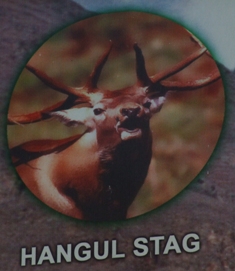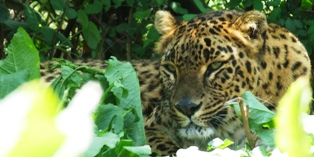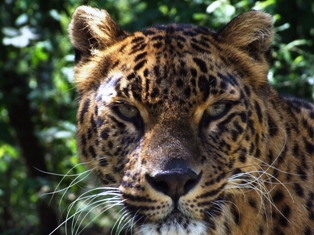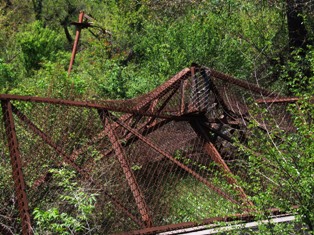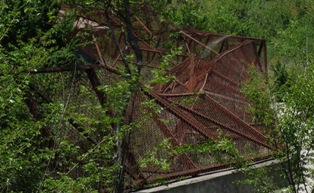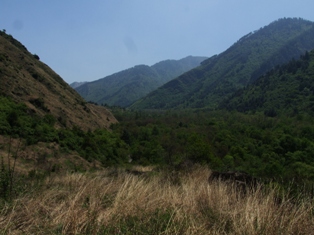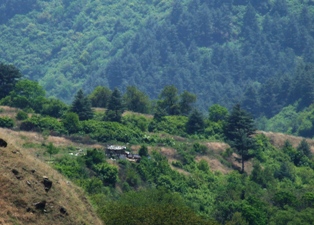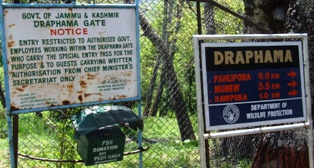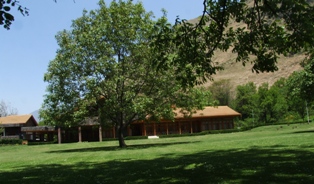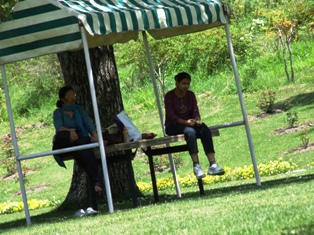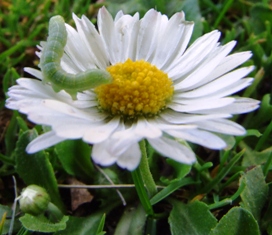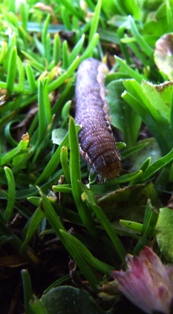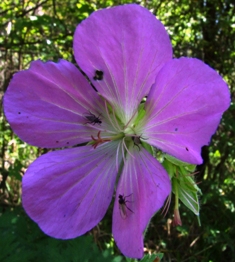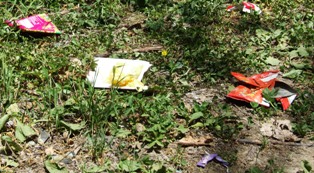|
I think a photography class should be a requirement in all educational programs
because it makes you see the world rather than just look at it.
~Faheem Qadri,
Wildlife Photographer,
Secretary General,
KGECL, J&K
Contact: +91-9419969097
Email: faheem.qadri@gmail.com
A Case Study:
Dachigham National Park, Harwan, Srinagar, Kashmir
C/o: Save Hangul Campaign, an initiative of the Hangul Conservation Programme (HCP),
Kashmir
Geographic Eco-Coop. Ltd., J&K
http://kashmirgeographic.tripod.com
savehangul@gmail.com
+91-94199-71524
_____________________________________________________________________________
State- Jammu & Kashmir
NAME Dachigham National Park
IUCN MANAGEMENT CATEGORY II (National Park)
BIOGEOGRAPHICAL PROVINCE 2.38.12. (Himalayan
Highlands)
GEOGRAPHICAL LOCATION Lies 21km north-east of
Srinagar, summer capital of the State of Jammu & Kashmir. It comprises the catchment area of the Dagwan River. The boundary
follows the watershed of the river and its tributaries. Approximately 34*05'N, 74*28'E
DATE AND HISTORY OF ESTABLISHMENT Declared a national
park on 4 February 1981 (State Order No. FST/20). The area was a hunting reserve or 'rakh' of the Maharaja of Jammu &
Kashmir from about 1910 until 1947, when its management reverted to the Forest Department. It was declared a sanctuary by
State Order No. 276/C in 1951 (Holloway, 1970; Holloway and Wani, 1970). AREA 14,100ha
LAND TENURE State government
ALTITUDE Ranges from 1,690m at the national park entrance to 4,290m.
PHYSICAL FEATURES The mountain ranges enclosing Dachigam
are a part of the great Zanskar Range which forms the north-west branch of the central Himalayan axis, bifurcating near Kulu
and terminating in the high twin peaks of Nun and Kun. The fold of this range is thrown into a number of undulations enclosing
narrow gullies, and broader outflanked gullies locally known as 'Nar'. Two steep ridges, one rising from near Harwan Reservoir
and another to the east of New Thir form the natural boundaries of the sanctuary. The series of undulations present a variety
of slope aspects, supporting an array of vegetational types. A number of rocky cliffs and scree slopes break the uniformity
of the main slopes. The main Dagwan River originates from Marsar Lake and flows into Harwan Reservoir; it is fed throughout
its course by a network of mountain streams draining through the numerous gullies. Complex crystalline rocks, granites, gneisses
and schists form the core of the Zanskar Range. Sedimentary rocks consist of slates, phyllites, and schists with embedded
crystalline limestone (Kurt, 1978).
CLIMATE Dachigam experiences an irregular climate, with much variation
in annual precipitation and in seasonal occurrence and length of dry periods. Conditions are sub-Mediterranean, with two dry
periods in June and September-November, and high precipitation during the winter and, to a lesser extent, summer seasons.
Mean annual precipitation for the period 1892-1971 is 664mm. Mean monthly temperatures range from about 20*C in summer to
3*C in winter for evergreen forests at 1,700m (Singh and Kachroo, 1977). Meteorological data for Srinagar are given in the
current management plan (DWP, 1985).
VEGETATION A summary and map of the main vegetation
types are given by Kurt (1978), based on the work of Singh and Kachroo (1977, in press). Climax communities are: riverine
forest (1,600-1,800m), with Kashmir elm Ulmus wallichiana (E), poplar Populus ciliata, willow Salix caprea; Morus alba community
(1,700-1,900m), with Rhus succedanea; blue pine Pinus griffithii forest (1,700-3,000m) with Rosa brunonii, Parrotiopsis jacquemontiana,
Viburnum cotinifolium and Staphylea emodi; silver fir Abies pindrow forest (2,300-3,200m), with birch Betula utilis, spruce
Picea smithiana, Rhus succedanea and Kashmir elm Ulmus wallichianea (E); birch forest (2,900-3,700m) with Rhododendron campanulatum;
tall evergreen shrub (3,200-3,400m) with R. campanulatum and Syringa emodi; dwarf evergreen shrub (3,500-3,700m), with Rhododendron
anthopogon and Juniperus recurva;and alpine pastures. Many of the riverine forest associates were introduced by the Maharaja
or former occupants of the valley (Holloway and Wani, 1970). Parrotiopsis jacquemontiana scrub (1,700-2,400m), with Rosa webbiana,
Indigofera heterantha and Isodon plecantranthoides, predominates on northern slopes, while deciduous thorn scrub (1,700-2,400m),
characterised by R. webbiana, Berberis lycium and I. heterantha, occurs on southern slopes in Lower Dachigam. The other main
scrub community, which occurs at 1,700-2,400m, comprises Chrysopogon echinulatus, Themeda anathera and Artemesia vesitita
(Kurt, 1978). Further details of the vegetation are given in the current management plan (DWP, 1985). FAUNA Dachigam contains
the only known truly viable population of the hangul (Kashmir stag) Cervus elaphus hanglu (E), along with some 15 other known
species of mammals (Holloway, 1970; DWP, 1985). These include common langur Presbytis entellus, good numbers of leopard Panthera
pardus (V) and Himalayan black bear Selenarctos thibetanus (Kurt, 1979), brown bear Ursus arctos, which occurs in Upper Dachigam
but appears to be rare (Kurt, 1979; Gruisen, 1983), wild boar Sus scrofa, Himalayan musk deer Moschus chrysogaster (V) (Green,
1986), serow Capricornis sumatraensis and long-tailed marmot Marmota caudata. The wild boar was introduced by the Maharaja
for hunting but it appears to be dying out (Gruisen, 1983). The snow leopard Panthera uncia (E) is thought unlikely to survive
within the national park (Green, in press), although Holloway (1970) reports seeing one.
Due largely to poaching, the hangul population declined drastically from a crudely estimated 1,000-2,000 in 1947 (Gee,
1966) to under 200 in 1965-1970 (Gee, 1966; Schaller, 1969; Holloway, 1970). Concommitant with the effective implementation
of conservation measures, the population has steadily increased, with 250 estimated in 1976-77 (Kurt, 1978), 320 in 1978 (Kurt,
1979) and, based on censuses carried out by the Wildlife Protection Department, 347, 430, 482 and 554 in 1980, 1982, 1983
and 1984, respectively (Mir, n.d.). The avifauna is rich (Kurt et al., 1978). Some 112 species of birds have been recorded
(DWP, 1985). Of the pheasants, Himalayan monal Lophophurus impejanus and koklass Pucrasia macrolopha are present. Although
within their ranges, Himalayan snowcock Tetraogallus himalayensis and western tragopan Tragopan melanocephalus (E) have not
been recorded (Rodgers, in prep.). Brown trout Salmo trutta was introduced to the Dagwan River at the turn of this century
(Holloway and Wani, 1970).
LOCAL HUMAN POPULATION There are no longer
any permanent settlements within the national park. An estimated 10,000 sheep and 5,000 water buffalo belonging to Chopans,
Gujjars, Bakarwals and Banyaris used to graze the alpine pastures in summer and wood and grass was collected by local villagers
(Kurt, 1978, 1979). Such practices have since been stopped although livestock from a government sheep-breeding farm, established
on land excised from the former sanctuary in 1961, continue to occupy the Dagwan pastures of Upper Dachigam in summer (DWP,
1985).
SCIENTIFIC RESEARCH AND FACILITIES Detailed plant
ecological studies have been carried out by Singh and Kachroo (1977, in press). The interrelationships between microclimate
and altitude, topography and vegetation cover was examined by Singh and Kachroo (1978). The status of the hangul population
has received considerable attention ever since a report by Gee (1968), since when censuses have been carried out by Schaller
(1969), Holloway (1970), Kurt (1978, 1979) and more recently by the Department of Wildlife Protection (Mir, n.d.). Schaller
(1969) made some preliminary observations of hangul rutting behaviour and Kurt (1978, 1979) undertook a detailed ecological
study of the species. An ornithological survey was conducted by Kurt et al. (1978). Accommodation is available for visiting
scientists.
CONSERVATION MANAGEMENT Dachigam is vital not
only as a refuge for the hangul, but also as an undisturbed catchment area for the Harwan Reservoir, which is the main freshwater
supply for Srinagar. Furthermore, Lower Dachigam contains the only extensive patch of riverine forest remaining in the State
(Ranjitsinh, 1979). Here occurs a regenerating colony of the endangered Kashmir elm (Lucas and Synge, 1978). Holloway and
Wani (1970) give an historical resumé of the conservation and management of the area. With the construction of the reservoir
in the 1920s, people living within the catchment area were evicted. The last eviction is said to have occurred at Pahlipora
in 1934. While a hunting reserve, the area was policed by a force of game guards and the laws were strictly enforced. After
Independence, responsibility for the area reverted to the State Government and its administration passed successively to the
Fisheries Department (1947-1954), Forest Department (1954-1960), Tawaza Entertainment Department (1960-1964), Forest Department
(1964-1972), Fisheries Department (1972-1977), and finally back to the Forest Department (Directorate of Game Preservation)
in 1978. Protection of wildlife deteriorated in the period of upheavals following the accession of Kashmir to India. A block
of some 1,036ha was excised from the western edge of Lower Dachigam as compensation to villagers who had formally occupied
the sanctuary. The first management plan was prepared for the period 1970-1975 (Holloway and Wani, 1970). Poaching and many
other management problems continued unabated, however, until the effective implementation of control measures from 1975 onwards
(Kurt, 1978). In a subsequent management plan, the need to restore the habitat and regulate human activities was highlighted
(Forest Department, 1980). In the present management plan (DWP, 1985), emphasis is given to developing the education programme,
both for local people and visitors, and initiating a research programme. According to this plan, it is ultimately planned
to notify as protected all areas buffering the national park. In an award scheme organized by the Government of India in 1986,
Dachigam was selected as the best-managed national park in the country.
MANAGEMENT PROBLEMS Numerous problems existed
in the past (see Holloway and Wani, 1970; Kurt, 1978, 1979) but many of these have since been overcome, to which the increasing
hangul population bears testimony. The presence of the government sheep breeding farm is recognized as the main and long outstanding
problem, which, ultimately, can only be solved by its removal (DWP, 1985). In the meantime, with funds from the Dal Development
Board, a chain-link fence has been erected round the farm to prevent sheep from grazing the southern slopes of Lower Dachigam.
However, large quantities of grass are still cut from within the national park for winter fodder (Gruisen, 1983). Other problems
include the lack of coordination between the large number of different departments having interests in the national park (e.g.
Animal Husbandry, Hospitality and Protocol, PWD, Irrigation and Water Works, Electricity, Telephones, Agriculture and Fisheries),
and the disturbance to wildlife caused by visitors driving noisily along the 5km stretch of road to the VIP lodge at Draphama
(Gruisen, 1983).
General Information
Best time to visit: May-Aug. Upper Dachigam, Sept.-Dec. Lower Dachigam
Nearest Town: Srinagar (22 km)
For further information contact:
Nadeem Qadri,
President & CEO,
KGECL®, J&K
+91-9419971524
savehangul@gmail.com
https://kashmirgeographic.tripod.com/id17.html
Source: http://www.foresthillsindia.com/sanctuaries/rest02f1.htm
|

